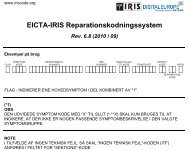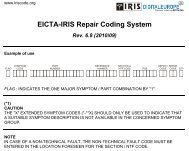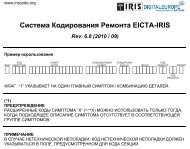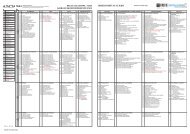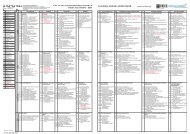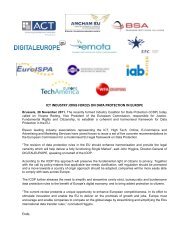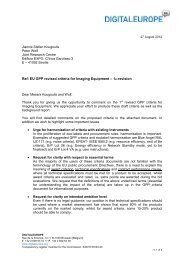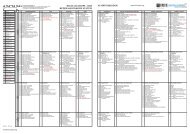Standardized DVB-T2 RF specifications - DigitalEurope
Standardized DVB-T2 RF specifications - DigitalEurope
Standardized DVB-T2 RF specifications - DigitalEurope
You also want an ePaper? Increase the reach of your titles
YUMPU automatically turns print PDFs into web optimized ePapers that Google loves.
Figure 2 - Tolerance to a single echo with Doppler<br />
Table 15 – C/N Variation Requirements for Time Varying Channel (PFP1)<br />
Mode Frequency<br />
Separation<br />
f1 Hz<br />
Δ C/N dB (with<br />
respect to C/N at<br />
1Hz frequency<br />
separation)<br />
5 – 32KN 256Q 3/5 1/32 PP4 8MHz 10 3 dB<br />
6 – 32KN 256Q 3/5 1/8 PP2 7MHz 10 3 dB<br />
7 – 32KE 256Q 2/3 1/128 PP7 8MHz 10 3 dB<br />
8 – 32KE 256Q 2/3 1/16 PP4 8MHz 10 3 dB<br />
9 – 32KE 256Q 3/4 1/32 PP6 8MHz 10 5 dB<br />
12- TOLERANCE TO IMPULSE INTE<strong>RF</strong>ERENCE<br />
12- 1- General<br />
C/Nmin + � dB<br />
C/Nmin<br />
C/Nmin (dB)<br />
Impulse interference is different from other forms of interference, in that it is generated in<br />
short bursts. Sources include car ignition systems and domestic appliances such as switches<br />
and electric motors. In portable and mobile environment, the impulse interference will reach<br />
the receiver directly through the antenna. The damage is potentially serious because a single<br />
impulse burst can destroy several symbols of data. Research work on the impulse<br />
interference has been mainly carried out in the UK digital television group (DTG) (ref 2).<br />
Some of the <strong>specifications</strong> presented here are derived from that work.<br />
12- 2- Test patterns<br />
C/N (dB)<br />
1 f1<br />
Frequency<br />
Separation (Hz)<br />
Various test signals comprising gated bursts of Gaussian noise are defined based on the<br />
model shown in Figure 3. These have been chosen to match different categories of<br />
measured impulse noise in the domestic environment such as dishwashers, lights, and<br />
central heating thermostats. The <strong>DVB</strong>-<strong>T2</strong> time interleaver improves impulse noise immunity<br />
significantly over <strong>DVB</strong>-T by breaking up the noise impulses over time. This requires longer<br />
noise burst durations, burst repetition periods and picture observation times (PFP2) to be<br />
used compared with <strong>DVB</strong>-T as shown in Table 16.<br />
>>12 of 27



